|
I. Consumer Markets and Consumer Buyer
Behaviour What is Consumer
Behaviour?
Model of Consumer
Behaviour
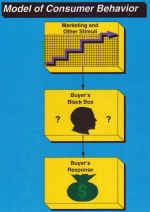
|
Marketing and Other Stimuli
Product, price, place, promotion,
external environments |
Buyer's Black Box
The Buying Decision Process
(called this because we cannot know
precisely for every consumer exactly what process goes on
in the mind, but it includes Buyer Characteristics and
Buyer Decision Process) |
Buyer's Response
Choice of product, brand, dealer;
Timing and amount of purchase |
 |
Exercise
Black Box |
For something you have purchased
recently, tell us about what went on in your "black
box." What did you purchase, and, as accurately as you can
describe,
what did you think about while you were deciding whether to
buy?
Post your
answer in the
Moodle Discussion Group. |
|
Characteristics Affecting Consumer Behaviour
Cultural/Subcultural Factors
Culture
Families/Communities
Values
Perceptions
Preferences
Behaviours
|
Subculture
National
Religious
Racial
Ethnic
Geographic
Internet Use |
Social Class
|
Two Different Social Classes,
Two Different Ads
Measuring
Social Class
You can try using
this Index to determine what social class you (or
your friends!) belong to
|
Warner's 1949
Index of Status Characteristics
Still in use today, but we add education and spouse's
income and education
|
| Score |
Occupation |
Income Source |
House Type |
Dwelling Area |
| 1 |
Professional,
Proprietor of large business |
Inherited wealth |
Excellent |
Old Money |
| 2 |
Semi-professional, Official of
large business |
Earned wealth |
Very good |
Better suburbs |
| 3 |
Clerk |
Profits & fees |
Good |
Above average |
| 4 |
Skilled worker |
Salary |
Average |
Average |
| 5 |
Proprietor of small business |
Wages |
Fair |
Below Average |
| 6 |
Semi-skilled worker |
Private relief |
Poor |
Low |
| 7 |
Unskilled worker |
Public relief &
non-respectable income |
Very poor |
Slum |
(Note: each vertical category stands alone, related
only to the scores 1-7, not to other categories)
ISC Score = (Occupation x 4) + (Source of Income x 3) + (House Type x 3) + (Dwelling Area x 2)
| Score |
Social Strata |
% of
Population
(U.S. in 1949) |
| 12-17 |
Upper Upper |
1.4% |
| 18-24 |
Lower Upper |
1.6% |
| 25-37 |
Upper Middle |
10.2% |
| 38-50 |
Lower Middle |
28.8% |
| 51-62 |
Upper Lower |
33.0% |
| 63-84 |
Lower Lower |
25.0% |
Warner,
W. L., M. Meeker, and K. Eels (1949) Social Class in America. Chicago: Science Research Associates.
|
| I did my earliest doctoral work in
Social Class, until I discovered that at the University of
Toronto at that time it was a subject without much
interest among the faculty. Now that I have
established a niche for myself in my field, I am returning to questions
that interested me long ago. Click here to read the paper
on social class that
I presented at a business ethics conference in November
2000, which was subsequently published (Ripley,
M. Louise (2001) “You Wouldn’t Want to Hear – Ethics
in the Business Classroom: Gender, Race, But Please Not
Class.” Journal of Contemporary Business Issues
8:2 (Fall): 84-92).
The
paper comes out of my experiences in Administrative
Studies classrooms
teaching the concept of Social Class. It is dedicated to
Professor Dan Greeno, one of my earliest professors in my
doctoral programme, who encouraged me to study what I
loved best, and to whom I owe a great debt of
gratitude. |
Social Factors
Groups
|
Primary |
Secondary |
Aspirational |
Reference |
| Reference
groups
influence how important products are to us, depending on whether people
we care about see us using them. Bearden and Etzel, two Marketing
scholars, wrote an article about this using the terms PU for public and
PR for private, and L for Luxury and N for necessity. From an essay exam
some years ago, here is BAS graduate Alan Stanbury's explanation of
these terms. |
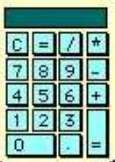 |
PUL
means publicly consumed luxury.
|
Alan writes: When I was
an engineering student, most of my peers
bought cheap calculators, and spent what
they had left over on beer. Some of us,
however, purchased Hewlett Packard
calculators, at three times the price.
Why? They were a luxury that conveyed
status and that I could use in public, at
working sessions with my peers. The HP
also had an esoteric operating system;
unless you were dedicated, you couldn't
make it work, so it
helped support the image of intelligence I
was trying (unsuccessfully) to establish.
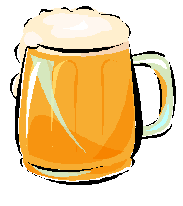 |
PUN
means publicly consumed necessity. |
Because I had
spent so much on the calculator, I was
short of money when my reference group got
together at the pub. I bought the least
expensive draft beer. It was a necessity,
you had to drink something if you wanted
to socialize, and I consumed it in public
without worrying about the image I was
setting.
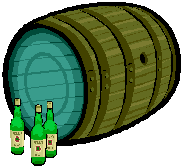 |
PRL
refers to luxury items consumed in
private. |
For the now mature engineer, a
private luxury: Strathisla scotch whisky,
consumed by the fire while studying
marketing. Of course Strathisla is hand
imported, you can only get it at the
Chivas distillery in Scotland where it is
made. I consume it in private.
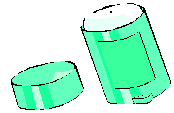 |
PRN
means privately consumed
necessity. |
Because
engineers work so hard when they are
sober, they often sweat profusely. A
private necessity for these hard working
souls is of course, whole body deodorant.
This helps me stay in the reference groups
at work and at home.
|
 |
Exercise
Reference Groups |
Give
an example of a good you bought recently;
tell which category it fits into (PRL/PUL/PRN/PUN)
and explain why.
Post your answer in the
Moodle Discussion Group. |
|
Family
Family of Orientation is the the family you were born or adopted
into; those you grew up with
Family of Procreation is those you choose to live with
after you leave your family of orientation.
Our
society's heterosexual bias used to mean that only traditional families
(Mom, Dad, 2.3 Children) were included in these definitions, but recent changes to the law in
Ontario and B.C. have meant that gay and lesbian couples may now legally
marry; and anyone in any relationship, or single, can procreate, either
by natural means, artificial means, or through adoption.
 |
Exercise
Families |
Give
an example of how your family (either of orientation or
procreation) has influenced your purchase behaviour.
Post your answer in the
Moodle Discussion Group. |
|
Roles and Status
Role - what others
expect of us
Status - how others value that role |
 |
Cathy, of the cartoon, stands
between two new cars beside a car salesman.
She says, in
a series of panels,
|
| "If I buy the
sensible four-door with room for kids, am I
opening the cosmic door to having children... or
will all prospective men ignore me because I look
as though I'm already a mother? |
| "If I buy the
sporty two-door that screams, 'single and
childless' do I look available or do I just look
desperate? |
| "Do I present
myself as a fully equipped motherhood package...
or as a carefree single gal? Which will my
potential mate respond to?? What will appeal to
him?? What's he looking for??" |
| In the last panel, the
frustrated salesman is in his boss's office crying, "She's back, and this time
she's brought her hypothetical
husband." |
 |
Exercise
Cathy's New Car |
Label
three elements of social factors at work on
Cathy.
Post
your answer in the
Moodle Discussion Group. |
|
Personal Factors
 |
Exercise
Age and Life-Cycle Stage |
How
are your purchases different now from what they
were ten years ago? If you were only 8 ten
years ago, consider what differences there will be in 10
years.
Post your answer in the
Moodle Discussion Group. |
|
|
Occupation |
What influence does your job have
on your purchases?
|
|
Economic
Situation |
How much have you got to spend?
|
| Lifestyle |
"Psychographics
is putting flesh on
demographic bones"

-- William Wells
What are your:
Activities?
Interests?
Opinions?
How do they affect what you buy?
|
| Personality &
Self Concept |
Who
are you &
what do your purchases say about you? |
 |
Exercise
Mazda Miata |
How does
this ad for the Mazda Miata below demonstrate how
advertisers make use of age, life cycle, and lifestyle? (That's an old
Porsche in the background).
Post your answer in the
Moodle Discussion Group. |
|
Psychological Factors
Motivation
Freud at the Store
 |
Exercise:
Lab
Freud at the Store |
Go to
the drugstore, grocery store, hardware store, wherever
you like to shop. Look around. Find something you'd
really like to buy but won't. Take a good look inside
yourself; why do you want it so much? Why won't you buy
it?
Post your answer in the
Moodle Discussion Group. |
|
| Maslow |
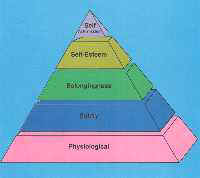 |
|
NEED |
PRODUCT |
PROMOTIONAL
APPEAL |
| Self
Actualization |
Golf Clubs |
"Time is
to enjoy" |
| Esteem |
Luxury Car |
"Be in
control of the road." |
| Social |
Pendant |
"Show
her you care." |
| Safety |
Tires |
"Bounces
off hazards" |
| Physiological |
Cereal |
"Natural
energy source" |
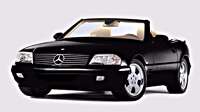 |
"If
it really was lonely at the top, it wouldn't have
two seats." |
Perception (true story)
|
Selective
Exposure - You notice an ad on TV for
Tom Hank's movie "Cast Away" (Solomon
estimates we are exposed to 5,000 ads a day; you
can't see them all but you did see this one) |
 |
|
Selective Perception - the ad makes you
think about your life-long dream to escape to a
south seas island |
 |
|
Selective Retention - the next night,
you hurry up dinner and go out to see the film,
even though it's snowing badly, because the ad
stuck in your mind. |
 |
Learning
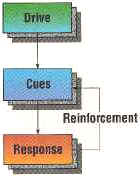 |
We don't really know
how we learn. We know it has to do with a drive to
find something out, cues that we find that keep us
going after it, reinforcement from the response we
get that encourages us to try again. And so in
schools, we never stop studying about learning,
and we keep trying different things, offering a
variety of learning opportunities, hoping at least
one will work for each person. A fairly new
idea is the one about learning on one's own
using resources available through the
Internet. |
Beliefs and Attitudes
| Belief |

|
| Good for you |
|
|
Attitude |

|
|
Tastes good |
|
|
Belief -
(another
true story) |
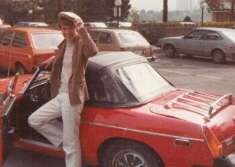 |
| Not a good car; it averaged me $200/month in
repairs for the whole time I owned it |
|
|
Attitude |
 |
| Best car I ever had! I absolutely loved that
little car |
|
|
This difference between Belief and
Attitude is a difficult concept. Here, from Kotler's and
Roberto's text on Social
Marketing used in AK/ADMS4280, is a useful
description, with the addition of the term
"values."
|
Belief |
"I believe
smoking is hazardous to my health." |
|
Attitude |
"I believe smoking is hazardous to my health and I
would like to quit smoking." |
|
Value |
"I believe
smoking is hazardous to everyone's health and all smokers
ought to quit smoking." |
|
|
 |
Exercise
Beliefs and Attitudes |
Explain
why for the woman above with the MG (me some years ago and
30 pounds lighter!) the statement that her " MG is not a good car"
is a
belief rather than an attitude
Post your answer in the
Moodle Discussion Group. |
|
There are three basic components of Attitude, shown in
this table:
- Cognitive.
Within this component, the customer becomes aware of and
learns about the product. This awareness can involve
attention, knowledge, learning, and any other response that
helps to build the consumer's objective, cognitive
perception of the product.
- Affective.
Within this component, the consumer begins to develop a
subjective response. This response can include feelings,
interests, desires, likes, preferences, and convictions. The
consumer's response can start out weak, but must gain
strength if he or she is to purchase the product.
- Behavioral.
Within the behavioral component, the consumer is induced to
buy. Potential customers may like the product, prefer it to
others and believe that it satisfies their particular need
or want. However, parting with the money is a big step.
Marketers work to encourage the customer to take action in
the form of a purchase. Ideally, the customer will then
become a regular, loyal buyer. Marketers often use
post-purchase or reminder communications at this point to
reinforce purchases and to create cognitive awareness of
other products, thus hoping to influence attitudes for these
additional products.
|
The Buyer Decision Process
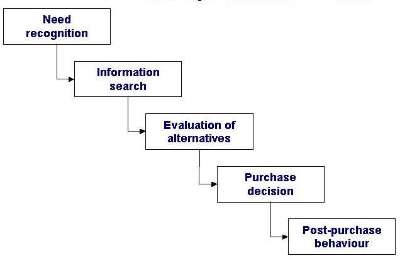 |
including
resolution of cognitive dissonance
(getting rid of that bad feeling that you've spent too much) |
 |
Exercise
Cognitive
Dissonance |
How have
you resolved the dissonance you may have felt after making a
major purchase? What have you done to make yourself feel
better about spending all that money?
Post your answer in the
Moodle Discussion Group. |
|
The Buyer Decision Process for New
Products
Stages in the Adoption Process
Individual Differences in Innovativeness
 |
Exercise
Adoption Rates |
Tell us
either about a product for which you are in the
Innovators or Early Adopters stage - that is, you really
were the first on your block to have one, or about a
product you didn't buy till everyone else had one and
the price had dropped significantly.
Post your answer in the
Moodle Discussion Group. |
|
Influence of Product Characteristics on
Rate of Adoption
 |
Exercise:
Plan
Relative Advantage |
What
relative advantage does your Marketing Plan product
offer the consumer? How is it better than what's already
out there that might meet consumer needs in a similar
way? This will provide the answer to the part of the
Plan you have to include that asks you to tell what the
gap is between what's out there and what you will
provide to meet consumer needs.
Post your answer in the
Moodle Discussion Group. |
|
International
Conosiderations
Can you advertise all these products the
same way in Mozambique that you can in Montreal?
 |
Exercise
International
Consumer Behaviour |
Give an
example, either from personal experience or what you
have read or heard about, of how the purchase of a
particular good or service is different in a country
other than Canada.
Post your answer in the
Moodle Discussion Group. |
|
II. Business Markets and Business Buyer
Behaviour
Business Markets
| Selling to the
business-to-business or industrial market is much like
selling to the consumer market in that you still sell to a
person. "The Company" does not write up a purchase
order; a person does. When Bill Wigley's Auction Service of Calgary markets their
services to the oilfield and mining industries, they appeal to
potential customers in much the same way that Procter and Gamble
appeals to buyers of toothpaste and soap. |
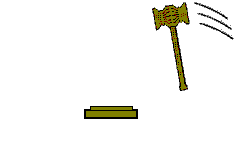 |
| But
Business-to-Business Marketing does differ from consumer
marketing:
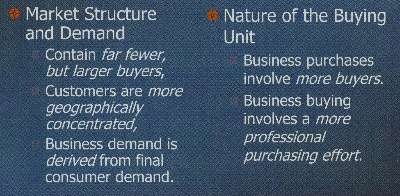
|
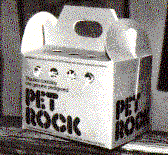 |
Business-to-Business (B2B)
Marketing also differs from Consumer Marketing in that
things are generally less volatile in the Business market
in terms of customer's tastes. While industrial
marketers change and adapt their products to meet the needs of
their consumers, there isn't really an equivalent in the Business
Market of the Pet Rock. |
 |
Exercise
Business Demand |
For
your Marketing Plan product, give
a specific example of how demand for a
Business-to-Business
product (supplies perhaps) will be driven by demand for a Consumer good.
Post your answer in the
Moodle Discussion Group. |
|
Types of Decisions and Decision Process
Business Buyer
Behaviour
Major Types of Buying
Situations
Straight Rebuy is pretty much
routine; Modified rebuy requires a little research; New Task
requires a lot of research
| Major Influences on Business
Buyers |
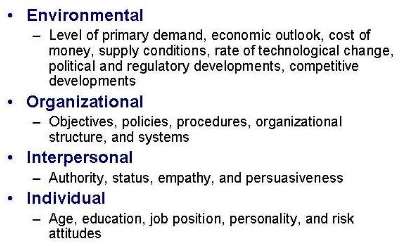 |
The Business Buying Process
E-Procurement: Buying on
the Internet
 |
Exercise:
Plan
Buying |
Your
Marketing Plan assignment requires that at least part of
your company's business be in e-commerce. By which of
these electronic methods might your
company do B2B purchasing on the
Internet?
Post your answer in the
Moodle Discussion Group. |
|
|